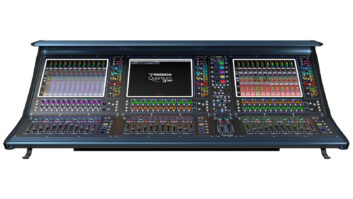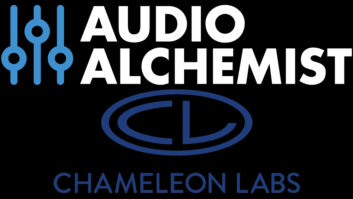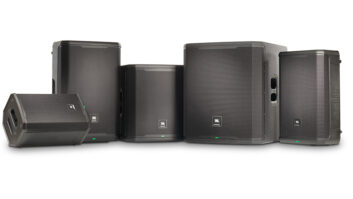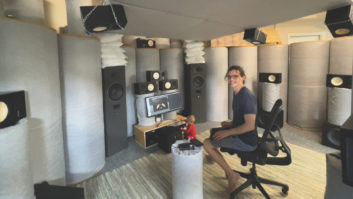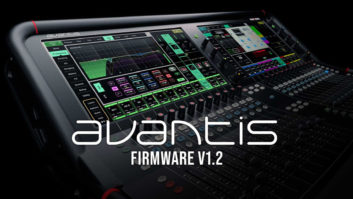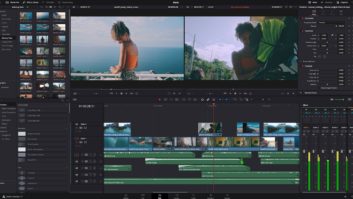Craig Anderton

When plugins first appeared, the goal was often to provide virtual equivalents of hardware devices—similarly to how CGI originally reproduced reality less expensively. But just as CGI graduated to creating virtual environments that could exist only inside a computer, plugins are stretching into areas with no hardware precedent—as well as providing previously difficult-to-implement functions, like phase-linear operation.
Fabfilter’s Pro-Q 2 is a good example of a plug-in that has expanded beyond bread-and-butter operation. Some of its features are designed more to improve workflow than provide new functionality, such as its “Spectrum Grab” option. If you see a peak in the included spectrum analyzer, you can hover over it. Pro-Q 2 then creates a peak/notch “bell” band in the EQ curve, and chooses what it considers an appropriate Q. Of course, you can adjust this further, but it gets you where you want to go faster. There’s also a spectrum-matching function based on a signal feeding the sidechain input, so you can impart one signal’s timbre on the one being processed by the Pro-Q 2.
The Pro-Q 2, as well as Nugen Audio’s SEQ-S, Blue Cat Audio’s Liny EQ, Cakewalk’s L-Phase Equalizer, and others offers both linear-phase operation and mid/side processing. Unlike the common infinite impulse response-based EQs that introduce phase delay at the frequencies being processed, linear-phase equalizers based on finite response filters delay the signal to preserve phase linearity throughout the spectrum. The subjective result is no “smearing,” but as with anything audio, there are tradeoffs. Standard EQ provides a certain “character,” while phase-linear types are more “surgical.” Also, linear-phase EQs can exhibit pre-ringing, a sort of low-level “swoosh” ahead of transients subjected to relatively high gains and Qs—while standard EQ can exhibit post-ringing (although the audio frequently masks this). Furthermore, linear-phase EQs generally have relatively high latency due to delaying the signal, so they tend to be used more for mixing and mastering than tracking. As a result, many EQs offer linear as well as non-linear modes so you can choose what’s appropriate.
Phase-linear operation is also a natural for multiband compressors, which you can consider as graphic equalizers that just happen to have per-band dynamics control. In addition, by setting a multiband compressor not to compress, it can serve as a crossover—for example, split a signal into two bands, and send one through a multiband compressor set to cover the high frequencies and another covering the low frequencies, with both having the same crossover frequency. This opens up a variety of multiband processing applications, including processing the low band with non-linear EQ to prevent pre-ringing, and the high band with linear-phase EQ for transparent highs.
Mid/side EQ takes independent control over the left and right channels a step further by letting you EQ the mid (center) as well as sides (left and right) separately. A good application is mastering for vinyl, where you can insert a steep low cut filter in the sides to make sure the bass is centered. Or, increase the highs on just the sides to add “air” while widening the stereo image… or boost around 3-4 kHz in the mid to bring out vocal articulation for vocals mixed to center, while minimally affecting instruments panned to the sides.
Then there are the EQs that go to whole other places, like the SoundRadix SurferEQ. Just as synthesizer filters can do keyboard tracking to change the frequency as you play different notes, SurferEQ tracks monophonic instruments and moves the filter bands based on the signal’s fundamental. This maintains a consistent timbre over different frequency ranges. And while it’s not particularly new, the Q-Clone from Waves can model EQs, including any favorites you might have, with its Q-Capture component. But if you don’t feel like expending the effort to model your own favorite EQ, no worries—Waves has compiled a library of models you can load.
And while we touched on this previously in the “Self-Driving Audio” column, in case you missed it, we should also mention Sonible’s frei:raum, whose “Smart EQ” mode analyzes program material and creates a suggested curve; and iZotope’s Neutron, which automates several functions, including EQ, to create what are essentially custom “presets” based on the material it analyzes, which you can then tweak.
So what’s the downside? These EQs tend to cost more, use more CPU power, and with their sophisticated graphics, may require OpenGL 2.1 graphics—but what you get in return is a new generation of processors that provides remarkably sophisticated frequency shaping.
Check out author/musician Craig Anderton’s web site at craiganderton.com, and stream his music from youtube.com/thecraiganderton.
